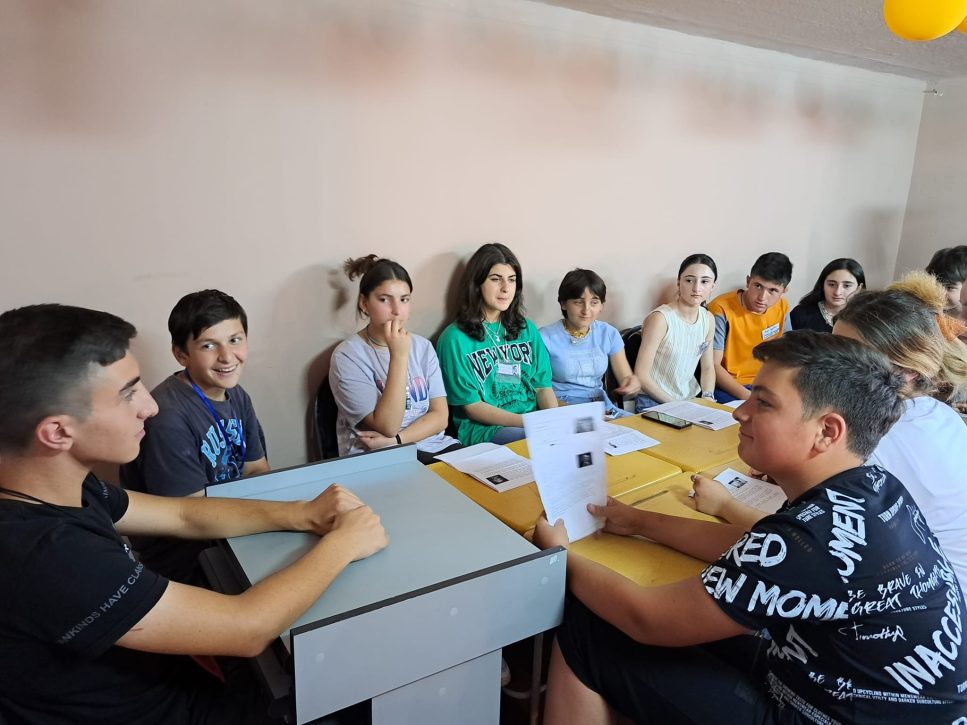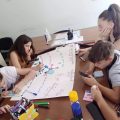As part of the activity, teachers introduced the students to the challenges that the small resort town has been facing, including unemployment, ecology and unauthorized constructions.According to the scenario, part of the students took on the roles of the City Mayor, Chairman of the City Council and other employees of the local self-government, while the rest portrayed the roles of media representatives, civic activists and environmental defenders. During the simulation, in accordance with their roles, students staged protests, prepared news for media, collected signatures and addressed the local self-government with a petition. The simulation took place on July 16 at N3 Public School of Surami, which also hosted students from №2 and №4 public schools of the town. Based on the enthusiasm and vast interest expressed by the students, the simulation lasted for 4 hours. The goal of the activity was to help children understand how local self-government works, how they can voice their opinions and partner with local officials to solve problems in their communities.The Activity was implemented in the framework of USAID Civic Education Program.

Students from the public schools of Surami participated in a simulation of local self-government
Related posts
News
Students of Tbilisi Public School Nº175 cleaned the territory of Mukhiani cottages
June 28, 2024
News
This time, the school-business forum was held on the scale of Samtskhe-Javakheti. Students presented 10 different projects to the local private sector for funding.
June 28, 2024
News
With the support of microfinance organization “Imercredit”, students of Tskaltubo Nº1 public school implemented the project “Olympo”
January 22, 2024


